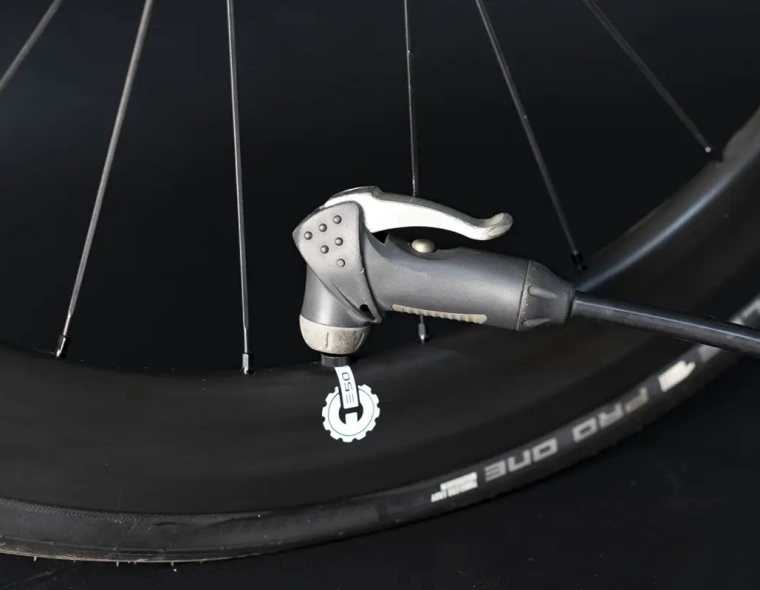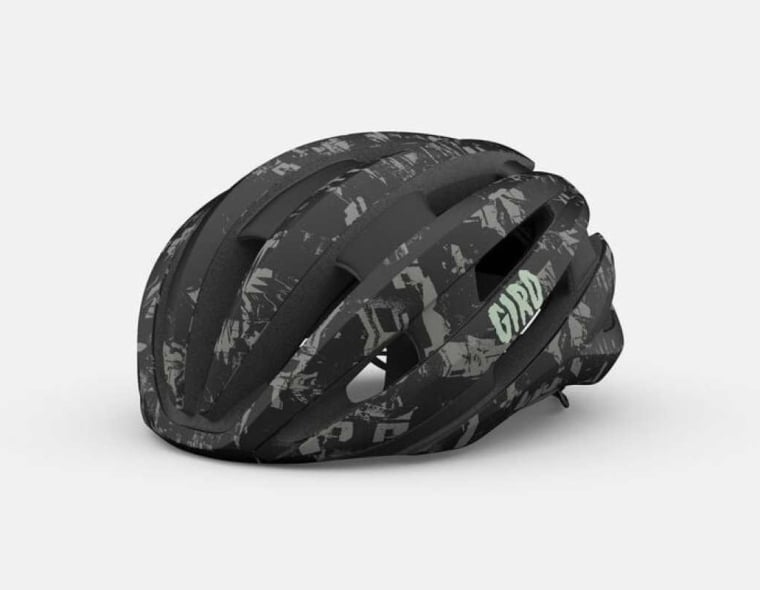Wheel bearings are one of the most critical components of your road bike. Without them, the wheels wouldn’t be able to rotate smoothly, and your bike would lose its efficiency. For competitive cyclists and enthusiasts alike, understanding how wheel bearings work and how to maintain or replace them is essential. Elitewheels, known for their precision and performance in both road, gravel, and Triathlon Cycling, uses high-quality bearings that are designed for durability and smoothness.

In this article, we’ll walk you through how to identify issues with wheel bearings, the steps involved in replacing them, and best practices for maintaining your wheelsets. Whether you ride with Drive 50D on your road bike or with Marvel G36 on a gravel bike, taking proper care of your bearings will optimize your performance on every ride.
Understanding Wheel Bearings
Before we dive into how to identify issues with your bearings, it’s important to first understand what they do and how they affect your riding experience. Bearings are small components that help your wheel spin smoothly by reducing friction. They are housed inside your wheel’s hubs and help distribute the load between the axle and the wheel rim.
In high-performance cycling, the quality of your bearings can significantly affect ride quality. Elitewheels products are designed to maximize the efficiency of their bearings, ensuring that when they function properly, your wheels rotate with minimal resistance. This results in less energy wasted during your ride, providing a faster and smoother experience. Most Elitewheels models use high-quality TPI or S&S ceramic bearings to enhance bearing life and performance.

Bearings in Elitewheels are often sealed, meaning that they are protected from dirt, moisture, and debris. This feature is crucial for cyclists who frequently ride in challenging environments, like muddy trails or rainy conditions. Properly sealed bearings ensure that your wheel hubs remain in peak condition, regardless of the conditions you ride in. This is one of the reasons why Elitewheels are a preferred choice for cyclists who demand both performance and reliability.
Identifying Problems with Wheel Bearings
Even with high-quality bearings in your wheelset, they are still susceptible to wear and tear over time. Bearings typically last thousands of kilometers, but external factors like riding conditions, maintenance practices, and the type of terrain you frequent can affect their lifespan. Here are some signs that your bearings may need attention:
Unusual Noises: The sound of a well-maintained bike is often a smooth hum as the wheels rotate. If your bearings start to fail, you might hear grinding, clicking, or even squeaking sounds from your wheel hubs. These noises occur when the inner parts of the bearing start to wear, causing the bearing balls to misalign or become rough. This could be caused by dirt, water, or contaminants entering the bearing. With Elitewheels’ Products, which are designed for precision, even a small noise can indicate that it’s time for an inspection. More About Identifying Common Noise Sources

Rough Spinning: One of the easiest ways to test if your bearings are in trouble is to spin the wheel by hand. If the wheel rotates smoothly with minimal effort, your bearings are likely in good condition. If you feel resistance or a rough, gritty sensation when spinning the wheel, this is a clear indication that the bearings are compromised. It is essential to catch this early to avoid more serious damage to the hub or axle.
Excessive Play or Wobble: A properly functioning wheel should have no lateral movement when you try to move it from side to side. If you notice that the wheel seems to wobble or there is noticeable play in the hub, the bearings may be worn out. This issue is important to address quickly, as it can affect your wheel’s alignment, potentially compromising your bike’s handling and safety.
Uneven Performance: If your wheel begins to show uneven resistance or fluctuates in speed, you might be dealing with a bearing issue. This is especially noticeable when cornering or accelerating, where smooth rotation is crucial for stability and power transfer. Elitewheels are engineered for precise, stable performance, so any irregularity in wheel performance can indicate that the bearings need maintenance.
Visible Damage: Sometimes, bearings can show visible signs of wear. If you notice any rust, pitting, or cracks in the bearings, it’s time to replace them. Even if there are no immediate performance issues, damaged bearings can worsen quickly and lead to further damage to the hub or axle.
Tools and Materials Needed for Bearing Replacement
To replace the bearings in your wheelset, you’ll need to have a few essential tools on hand. It’s important to use the correct equipment to avoid damaging your wheelset during the process. Here’s a detailed list of the tools and materials you will need:
Bearing Press: A bearing press is vital for installing the new bearings into the hub without damaging the housing. This tool allows you to apply even pressure to the bearing, ensuring it is securely seated. When using it on your hubs, make sure to apply gradual pressure to avoid cracking the bearing or hub casing.
Spoke Wrench: You’ll need a spoke wrench to remove the wheel from your bike. This ensures that the spoke tension is not disrupted during the removal process, which is important for maintaining the integrity of your wheelset.
High-Quality Bicycle Grease: Lubricating the bearings during installation is essential for smooth operation. Use high-quality grease designed for wheel hubs. Grease not only helps the bearings spin more easily but also protects them from moisture and corrosion. Elitewheels recommends using high-quality grease specifically designed for sealed bearings, as this will help prolong the life of your wheelset.

Allen Wrenches and Socket Set: Allen wrenches and a socket set are required to disassemble the wheel hub and remove components. Make sure to use the correct sizes to avoid stripping bolts or causing damage.
Bearing Extractor: A bearing extractor is used to carefully remove the old bearings from the wheel hub. It’s important to use this tool gently to avoid damaging the hub casing. If done incorrectly, it can damage your wheelset, so use a bearing extractor that is specifically designed for your hub type.
Clean Cloth or Rags: A clean rag or cloth is necessary to wipe off excess grease, debris, or dirt from the hub casing. Keeping things clean during the replacement process ensures that the bearings are installed in a clean environment.

New Bearings: You must replace old bearings with new, high-quality bearings that are compatible with your wheelset. For Elitewheels, the bearings are usually sealed to protect them from the elements, but you must ensure the replacements are of the same specifications to maintain the performance of the wheels.
More Information Learn About Identifying and Fixing Ticking Noises in Bicycles.
Step-by-Step Guide: Replacing Wheel Bearings
Let’s now walk through the steps of replacing the wheel bearings in your wheelset.
More Information About How to Service a Freehub Body.
Remove the Wheel: Start by using the spoke wrench to remove the wheel from your bike. Ensure that your bike is placed securely on a work stand or another stable surface to prevent any accidents. Make sure to also remove any accessories or attachments, such as a disc brake, that could obstruct the hub during disassembly.
Remove the Hub from the Wheel: Once the wheel is removed, use the correct tools to detach the hub from the wheelset. Take note of how the hub is assembled so you can easily put it back together later. This is especially important with wheelsets since the assembly is typically precise, and maintaining the proper alignment is key to optimal performance.
Extract the Old Bearings: Carefully use a bearing extractor to remove the old bearings. This process should be done gently to avoid damaging the hub casing. Place the bearing extractor against the edge of the bearing and pull it out evenly. If the bearings are stuck, try applying a small amount of heat to loosen them, but be careful not to overheat the hub casing.
Clean the Hub: With the old bearings removed, take a clean cloth and wipe down the inside of the hub casing. Removing dirt, grease, and old lubricant is essential to prepare the hub for the new bearings. If there is any debris left inside the casing, it could damage the new bearings.
Install the New Bearings: Lightly grease the new bearings and carefully place them into the hub. Use a bearing press to install the bearings evenly, applying gradual pressure. Make sure the bearings are seated fully and that they rotate smoothly.
Reassemble the Hub: Once the bearings are installed, reassemble the hub. Follow the disassembly procedure in reverse order, ensuring all parts are securely in place. Take your time to ensure everything aligns properly.
Reinstall the Wheel: After reassembling the hub, reinstall the wheel onto your bike, making sure it is securely fastened. Tighten all bolts to the manufacturer’s specifications. Spin the wheel to check for smoothness and make sure it rotates freely without any resistance.
Test Ride: Once everything is assembled, take your bike for a short test ride. Pay attention to the wheel’s performance. There should be no unusual sounds or resistance, and the bike should feel smooth and responsive.
Tips for Maintaining Wheel Bearings and Prolonging Their Lifespan
To ensure that your wheelset remains in excellent condition, it’s essential to keep the bearings well-maintained.
Here are a few tips for maintaining the bearings and maximizing their lifespan:
Clean Bearings Regularly: After riding in wet or muddy conditions, clean your bearings and wheels thoroughly. Dirt and moisture can cause the bearings to wear out prematurely.

Use High-Quality Grease: Always lubricate the bearings with high-quality, appropriate grease to reduce friction and protect against rust.
Check for Damage Frequently: Regularly inspect your wheelset for any signs of damage or wear in the bearings. Catching issues early can save you time and money in the long run.
Store Your Bike Properly: When not in use, store your bike in a dry, cool place. Avoid leaving it outside in the rain or humidity, which can lead to corrosion and bearing issues.
Use Proper Tools: Always use the correct tools for bearing maintenance. Using inappropriate tools can cause damage to your wheelset and shorten the lifespan of your bearings.
Replace Bearings Promptly: If you notice any signs of wear or degradation in the bearings, replace them immediately. Timely replacement prevents more severe damage to your wheelset.
Conclusion
Proper maintenance of the bearings in your wheelset is crucial to maintaining optimal performance and ensuring the longevity of your wheels. Whether you ride a road bike or gravel bike on a rugged gravel trail, keeping your bearings in top condition will allow you to enjoy a smoother, faster ride. By understanding the signs of bearing wear, replacing them when necessary, and following proper maintenance practices, you can ensure that your wheelset delivers consistent, high-performance results every time you ride.



